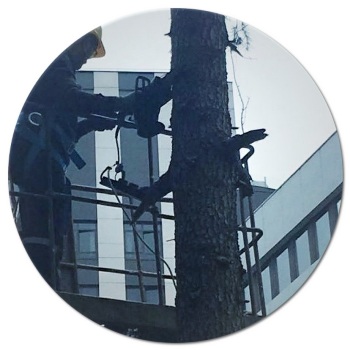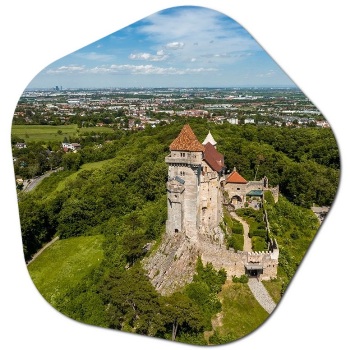When is tree pruning in Vienna?
Tree pruning in Vienna, Austria, typically follows similar guidelines to other temperate regions in terms of timing. Pruning is often done during the dormant season, which falls between late autumn and early spring when trees are not actively growing and have shed their leaves. This period is generally considered the best time for pruning because the tree’s structure is more visible, and the risk of disease and stress is minimized.
Specifically for Vienna, the following months are typically suitable for tree pruning:
- Late Autumn (November): After the leaves have fallen, the tree’s structure is easier to assess. Pruning during this time is common for deciduous trees.
- Winter (December – February): Throughout the winter months, when trees are dormant, you can continue with pruning activities. Just be cautious not to prune during freezing weather.
- Early Spring (March – Early April): As new growth is about to begin, you can still perform pruning to encourage healthy growth. Try to finish pruning before the buds fully open.

It’s important to note that the exact timing of pruning can vary depending on factors such as the specific tree species, weather conditions, and the goals of the pruning. Additionally, certain trees might have specific preferences for timing based on their growth patterns and flowering times.
Before conducting any tree pruning in Vienna or any other location, it’s advisable to consult with local arborists or tree care professionals who are familiar with the local climate and specific tree species. They can provide guidance on the best practices for pruning and help ensure that the timing and techniques are appropriate for your trees’ health and well-being.
Tree pruning in Vienna
How to prune trees, when to prune trees, what to consider when pruning trees, which trees to prune and when. Here’s what you need to know about tree pruning.

Tree pruning is applied differently in fruit trees and non-fruiting trees. In order to increase the yield of plants, pruning should be done by professionals for the rapid growth of trees. In order for trees and plants to develop and grow in a solid balance, to increase their yield, to combat diseases and pests, to increase carbon assimilation, to increase the productivity of crops, tree pruning is necessary on time.
The Importance of Tree Pruning The history of agricultural activities in the world dates back to ancient times, and it maintains its popularity because it is the basic need of human beings. Leafing and flowering times of trees should not be ignored during pruning in leafy species. In species that bloom before leafing, tree pruning should be done in the summer after the tree has finished blooming.
How to prune a tree in Vienna?
The shortening rate of the shoots that shed their flowers should be 1/3. Examples of tree species that will be shortened at this rate are the following trees: dogwood tree, bay tree, almond tree, golden cup tree, currant tree, spirit tree, black nut tree. Pruning is done in the autumn and winter seasons in the species where the flowers are formed on the annual young shoots. In this pruning process, the pruning of the branches is more than ½. Examples of this are the hydrangea tree, the spirit tree, the indigo tree, the senna tree, the labdanum and the rosewood.

In tree species whose flowers are on the shoots of previous years, tree pruning is done vigorously every few years. In this process, tree branches are shortened and thin shoots become free in winter. Examples of tree species on this subject are: Judas tree, lady’s salt, hawthorn, medlar, apple, yellow bunch and Japanese quince. In tree species whose flowers bloom at the ends of old branches, tree pruning and shoots are not shortened. A slight loosening is done on the branches of these tree species. In tree species whose branches do not mature and whose shoots dry out in winter, tree pruning is done at the same level with the soil, but in tree species that bloom at the time of growth, such as black nut tree, acacia tree, oilseed tree, ash tree, that is, maple, elm, bird, which has the characteristic of bleeding in late spring. tree and beech tree species, tree pruning should be done during the autumn season when the sap pressure is lower. In ginkgo and oak tree species, tree pruning can be done until the end of the winter season. Summer tree pruning is only possible in strong growing and developing seedlings.
Prices for tree pruning in Vienna
The cost of tree pruning in Vienna, Austria, can vary widely depending on several factors, including the size of the tree, the complexity of the pruning required, the accessibility of the tree, the specific tree species, and the local tree care service provider. Additionally, labor costs, equipment expenses, and other overhead can contribute to the overall pricing. Who does tree pruning in Vienna? >>
It’s important to note that tree care services, including pruning, are usually quoted on a case-by-case basis. To get accurate and up-to-date pricing for tree pruning in Vienna, I recommend reaching out to local tree care companies or arborists for quotes. They will likely need to assess the specific trees that need pruning in order to provide a more accurate estimate.
When requesting quotes for tree pruning, consider the following:
- Tree Assessment: Provide information about the number of trees, their sizes, and any specific concerns or requirements you have for the pruning.
- Services Needed: Specify the type of pruning you’re looking for, whether it’s routine maintenance, crown reduction, deadwood removal, or other services.
- Access and Location: Describe the location of the trees and their accessibility. Trees in difficult-to-reach areas might require additional equipment and effort.
- Certification and Insurance: Ensure that the tree care company or arborist you choose is certified, experienced, and insured. This ensures quality work and protects against potential liabilities.
- Detailed Quotes: Ask for detailed quotes that outline the scope of work, the techniques to be used, and the breakdown of costs.
- Comparative Quotes: Consider obtaining quotes from multiple tree care professionals to compare pricing and services.
Remember that while pricing is an important factor, it’s also crucial to prioritize the quality and expertise of the tree care service. Proper pruning techniques are vital for the health and longevity of your trees. Always choose reputable professionals who follow industry best practices and care about the well-being of your trees. Tree Pruning Service Vienna >>
Obtaining permits for tree pruning and tree felling in Vienna
In Vienna, Austria, regulations regarding tree pruning and tree felling can vary based on factors such as the location of the trees, their species, and the specific regulations set by local authorities. Before pruning or felling trees, it’s important to be aware of and follow the relevant regulations to ensure legal compliance and the health of the urban environment.
Here are some general steps and considerations for obtaining permits for tree pruning and tree felling in Vienna:
- Contact Local Authorities: Start by contacting the local city or municipal authorities responsible for tree management and conservation. They can provide information about the specific regulations and requirements for tree pruning and felling in your area.
- Tree Preservation Orders (Baumschutzverordnung): Vienna has regulations in place to protect trees and their environment. Certain trees may be protected by Tree Preservation Orders, which restrict pruning or felling without permission. Check whether the trees on your property are covered by such orders.
- Application Process: If you need to prune or fell a tree that is protected or requires permission, you’ll need to submit an application to the relevant authority. The application process might include providing details about the trees, the reasons for pruning or felling, and the proposed methods.
- Assessment: The authority will assess your application, which may involve an inspection of the trees. They’ll consider factors such as the health of the trees, the impact on the environment, and the safety of the work.
- Permission or Refusal: Based on the assessment, you will receive a decision regarding whether you’re granted permission for the proposed pruning or felling. If permission is granted, you’ll receive guidelines for how the work should be carried out.
- Professional Assistance: If you’re unsure about the regulations, it’s advisable to seek assistance from certified arborists or tree care professionals who are familiar with local rules and procedures. They can help you with the application process and ensure that the work is done according to industry standards.
It’s important to note that unauthorized tree pruning or felling of protected trees can result in fines and legal consequences. Before proceeding with any tree work, it’s recommended to consult with local authorities and professionals who can guide you through the process and help you meet the legal requirements. Regulations and procedures can change, so always ensure that you’re using the most current and accurate information.





